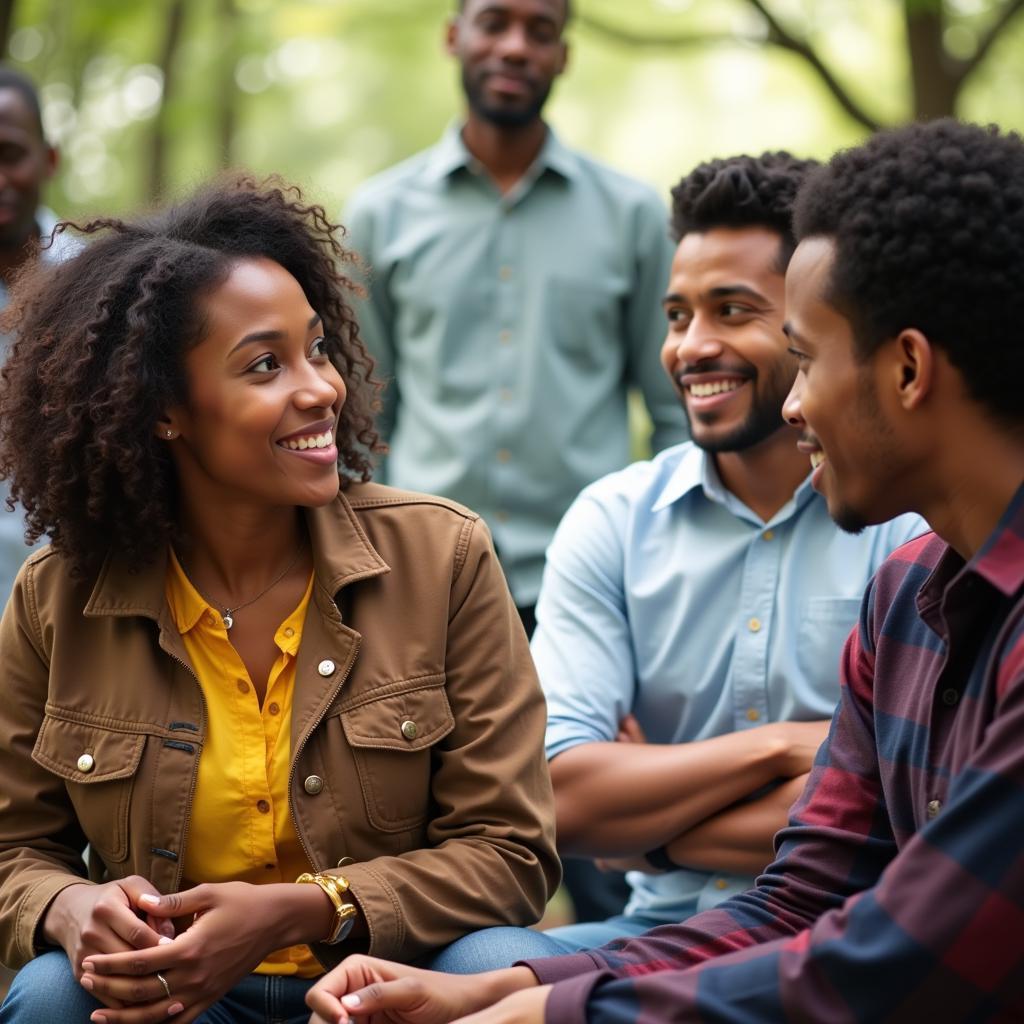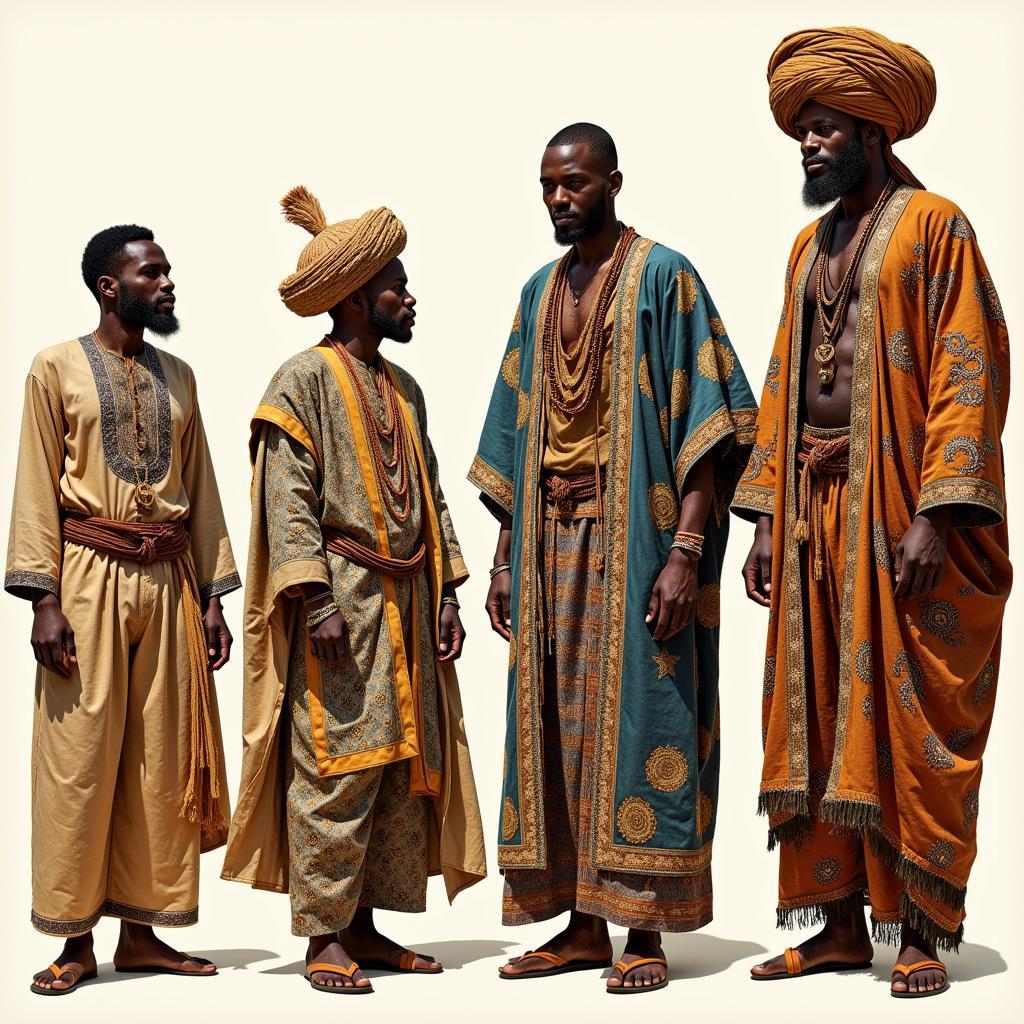The African God of Dance: Rhythms and Rituals
The African God Of Dance is a powerful symbol of the continent’s rich and diverse cultural heritage. While there isn’t one single deity universally recognized as the “god of dance” across all of Africa’s traditions, various deities and spirits are associated with music, movement, and the celebratory energy they embody. These figures play vital roles in spiritual practices, social gatherings, and artistic expressions, reflecting the deep connection between dance and life in African cultures.
Dancing with the Divine: Exploring African Deities of Rhythm
To understand the concept of an “African god of dance,” it’s essential to acknowledge the diversity of African traditional religions. Each ethnic group and region has its pantheon of gods and spirits, with unique attributes and domains. However, certain recurring themes emerge when examining deities associated with dance. These include:
- Fertility and Harvest: In many agricultural societies, dance is intrinsically linked to fertility rituals, invoking the gods for bountiful harvests and the continuation of life.
- Ancestral Spirits: Dance serves as a conduit to connect with ancestors, honoring their memory and seeking their guidance.
- Healing and Trance: In some cultures, dance is a form of spiritual healing, inducing trance states that allow individuals to communicate with spirits and seek their intervention.
- Warriorhood and Strength: Dance can also be a display of power and prowess, preparing warriors for battle and celebrating their victories.
Let’s explore some prominent examples of deities associated with dance and music across various African cultures:
Ogun: The Yoruba God of Iron, War, and Dance
In the Yoruba pantheon of West Africa, Ogun is a complex and multifaceted deity. He is the god of iron, war, and technology, but he is also celebrated as a patron of the arts, particularly music and dance. Ogun’s dances are often characterized by their intensity and vigor, reflecting his warrior nature. The use of metal objects, such as gongs and bells, in his rituals adds to the powerful and rhythmic soundscape.
Legba: The Trickster and Messenger of the Gods
Legba is a trickster god and a messenger between the deities and humanity in West African Vodun and Yoruba traditions. He is often depicted as a nimble figure dancing at crossroads, symbolizing his role as an intermediary between worlds. Dance is crucial to Legba’s worship, as it is believed to attract his attention and open pathways for communication.
Mami Wata: The Water Spirit of Fertility and Dance
Mami Wata is a water spirit revered across West, Central, and Southern Africa. Often depicted as a mermaid or snake charmer, she is associated with fertility, healing, and the mysteries of the water. Dance is an integral part of her worship, with practitioners often performing elaborate rituals to invoke her blessings and seek her guidance.
These are just a few examples of the many deities and spirits associated with dance in African traditions.
The Significance of Dance in African Culture
Dance in Africa is far more than just entertainment; it is deeply embedded in the fabric of everyday life and plays a vital role in various aspects of society:
1. Religious Ceremonies and Rituals: Dance is an integral part of religious practices, serving as a means of communication with the divine. Through rhythmic movements and trance-inducing dances, practitioners connect with deities, ancestors, and spirits.
2. Social Gatherings and Celebrations: From births and marriages to funerals and harvest festivals, dance is a ubiquitous element in social gatherings. It provides a powerful means of expressing joy, sorrow, solidarity, and cultural identity.
3. Storytelling and Oral Tradition: Dance often serves as a visual narrative, conveying stories, legends, and historical events through stylized movements and gestures.
4. Healing and Trance: In some cultures, dance is used as a form of spiritual healing. Rhythmic movements and altered states of consciousness induced through dance are believed to facilitate healing, exorcism, and communication with the spirit world.
5. Music and Rhythmic Expression: African music and dance are inextricably linked. Polyrhythms, complex drumming patterns, and call-and-response vocals create a dynamic and engaging soundscape that drives the movements and elevates the energy of the dance.
Exploring African Dance Styles
The vast continent of Africa boasts an incredible diversity of dance styles, each with its unique movements, rhythms, and cultural significance. Some of the most well-known and widely practiced dance styles include:
-
Gumboot Dance (South Africa): Originating from the mines of South Africa, Gumboot dance involves rhythmic stomping and clapping, using the miners’ rubber boots as percussive instruments.
-
Kpanlogo (Ghana): A high-energy dance from Ghana, Kpanlogo is characterized by its fast tempo, acrobatic movements, and playful interactions between dancers.
-
Adumu (Kenya): Performed by the Maasai warriors of Kenya, Adumu is a jumping dance known for its impressive height and the synchronized movements of the dancers.
-
Atilogwu (Nigeria): Atilogwu is a highly skilled and acrobatic dance form from Nigeria, often performed at festivals and ceremonies. It involves complex formations, synchronized movements, and displays of strength and agility.
-
Ndlamu (South Africa): Originating from the Zulu people of South Africa, Ndlamu is a warrior dance traditionally performed by men. It is characterized by its powerful stomping and high kicks, accompanied by rhythmic chanting and singing.
These are just a glimpse into the vast and vibrant world of African dance. Each style reflects the history, culture, and traditions of the people who created it.
The Enduring Legacy of the African God of Dance
While the specific names and attributes of the “African god of dance” may vary across cultures, the underlying reverence for music, movement, and their spiritual significance remains a constant. Dance in Africa is a powerful expression of life, a connection to the ancestors, and a celebration of cultural identity. As we continue to explore and appreciate the rich tapestry of African dance traditions, we gain a deeper understanding of the continent’s vibrant heritage and the enduring legacy of its divine rhythms.
FAQ
1. Is there a single African god of dance?
No, there isn’t one universal deity recognized as the “god of dance” across all African cultures. However, various deities and spirits are associated with dance and music, reflecting the diversity of African traditional religions.
2. What is the significance of dance in African culture?
Dance in Africa is deeply intertwined with religious practices, social gatherings, storytelling, healing, and cultural identity. It is a powerful form of expression and a vital part of everyday life.
3. What are some examples of African dance styles?
Africa boasts a wide array of dance styles, including Gumboot dance, Kpanlogo, Adumu, Atilogwu, and Ndlamu, each with its unique movements, rhythms, and cultural significance.
4. How has African dance influenced dance forms around the world?
African dance has had a profound impact on dance forms worldwide, particularly in the Americas and the Caribbean. Elements of African dance can be seen in styles like salsa, samba, hip-hop, and jazz.
5. Where can I learn more about African dance and culture?
You can explore African traditional religion for insights into the spiritual aspects of dance. Additionally, websites and cultural centers dedicated to African arts and music can provide valuable resources.
Need More Information?
Explore these related topics on Omenka:
For any further questions or assistance, feel free to contact us:
Phone: +255768904061
Email: kaka.mag@gmail.com
Address: Mbarali DC Mawindi, Kangaga, Tanzania
We have a dedicated customer support team available 24/7 to assist you.

